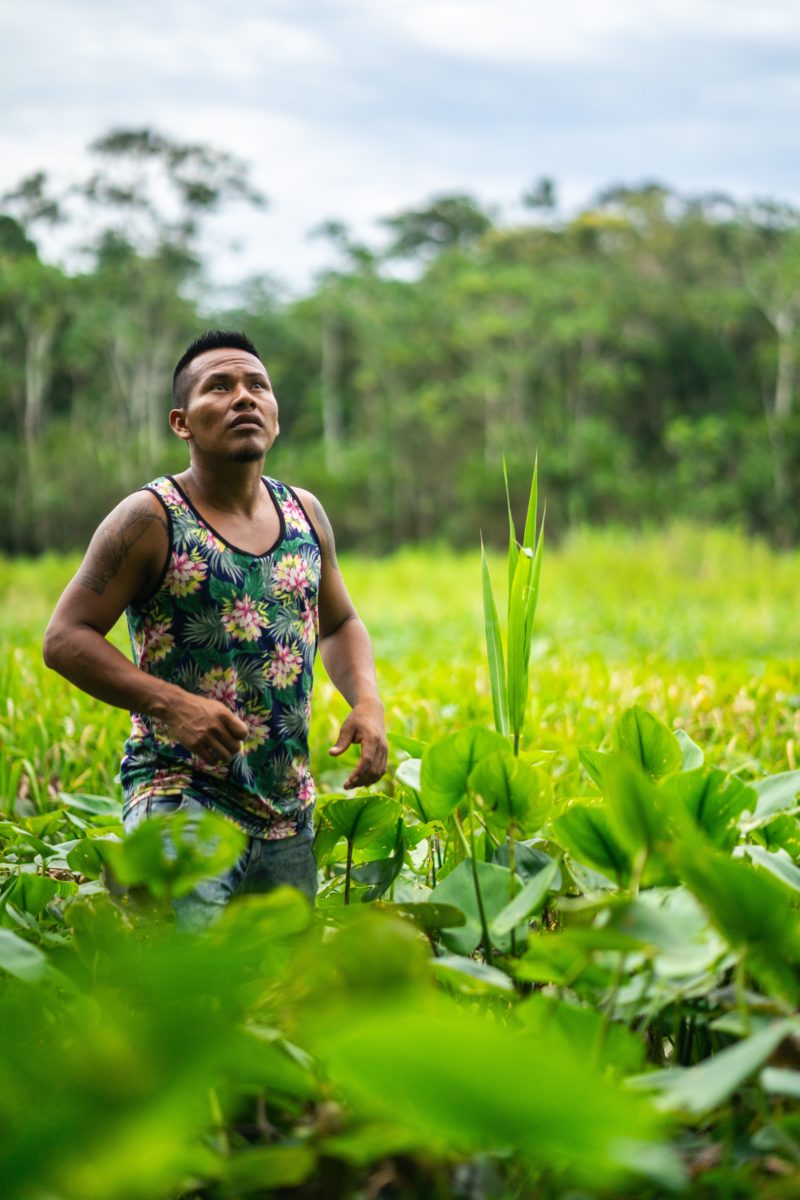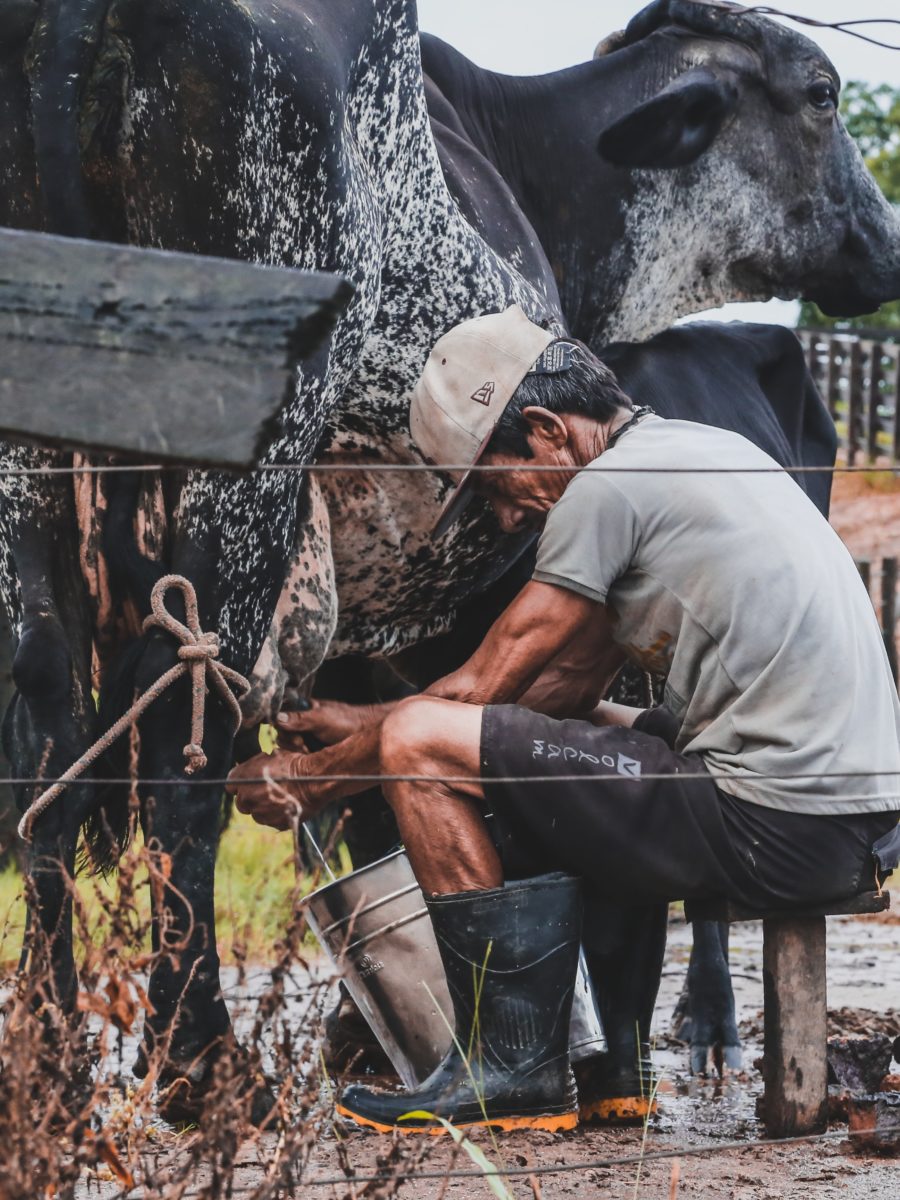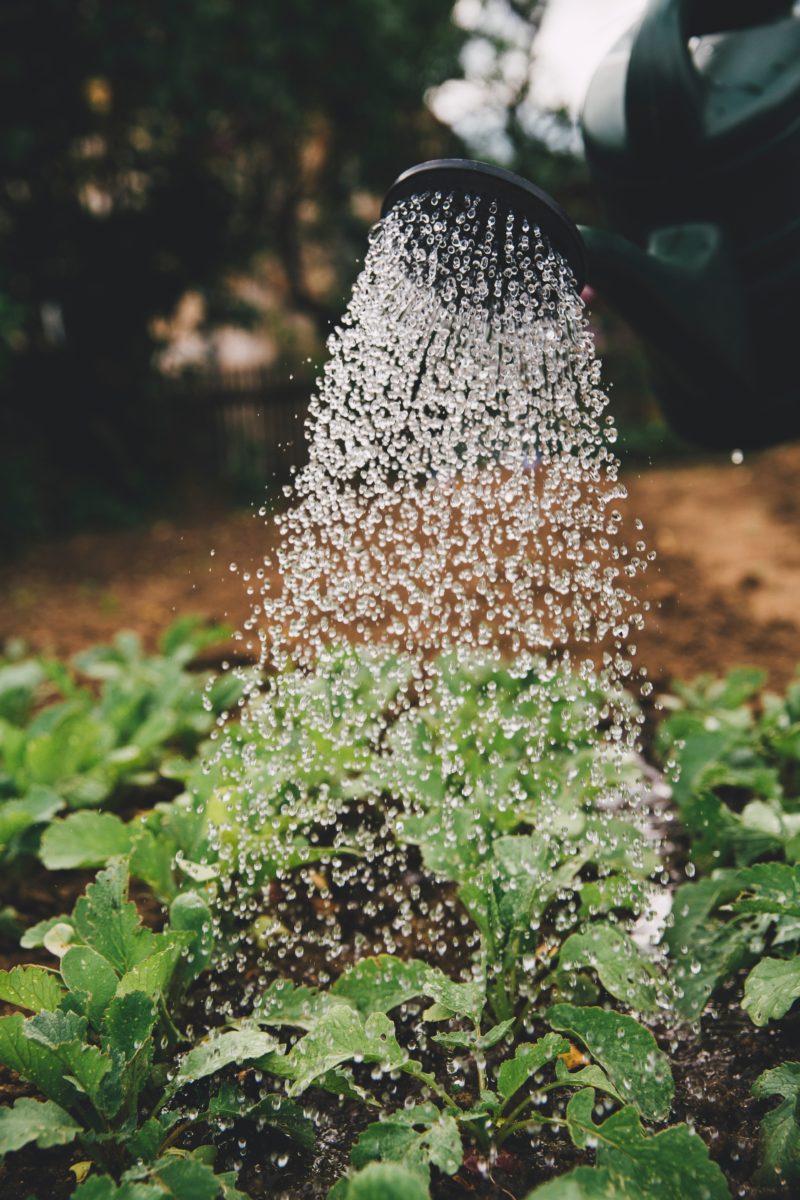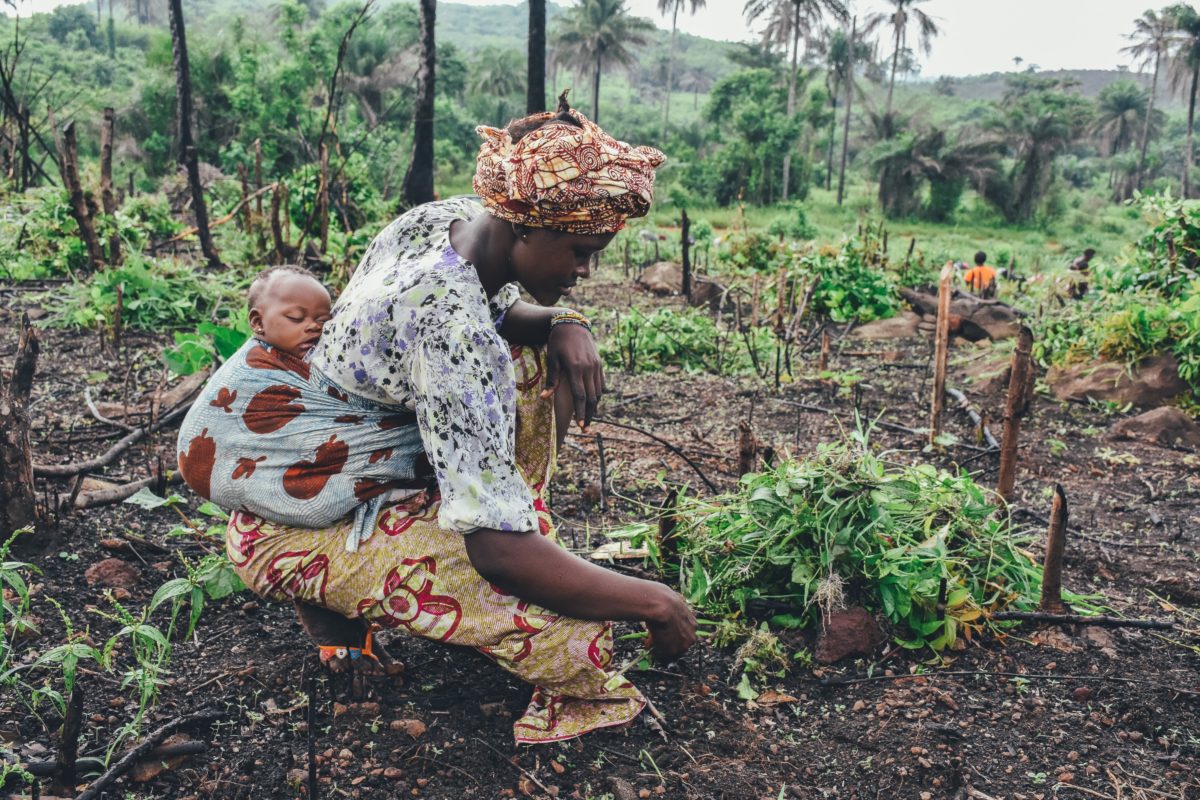The Burden of being a Farmer
Leonard Ong Jian Ting, Assistant Research Bioscientist
From films, books or urban culture in general, it is easy to form the impression that people living in the countryside have it ‘easier’, ‘slower’ or live more ‘relaxed’ lifestyles compared to urban dwellers. Contrary to popular belief, a crop farmer’s life is far from peaceful or stable.
A farmer’s livelihood is constantly subjected to turmoil, from unpredictable weather conditions, risks of occupational injuries, pest attacks, the volatility of the commodity market and the influence of government regulations, among other factors.
Whether it was the calling of the land to become a farmer, a lack of educational or investing opportunities or the occupation was inherited, there are common stress factors faced by farmers throughout the farming community internationally.
We have chosen five factors affecting a farmer’s livelihood for discussion.

Impact of Weather
A farmer’s livelihood depends largely on the weather, climate and the availability of water to thrive. It is very hard to describe what impact weather conditions have on a farmer.
Imagine with us for a moment….
You’ve invested every dollar you own in planting your crop, spent hours upon hours of hard labour tending to it. Watched it wither in front of your eyes as you pray every day for it to rain. But when it does rain, it rains and hails so hard that it wipes out whatever is left.
Or let’s examine a real-life example, in February 2019, north-west Queensland suddenly received three years’ worth of average rainfall in a week1,, causing the flood where an estimated 500K cattle drowned. Farmers recovering from such stock losses will put them under severe financial stress, let alone the emotional stress of watching their animals suffer and die one by one.
With increasing changes in global climates, dry and wet seasons are becoming more unpredictable. Planting seasons are faced with increasing uncertainty, affecting soil conditions and more importantly, increasing the chances of droughts and flooding2.

Economic cost: Market volatility affecting revenue
Volatility describes price fluctuation in a long-term trend and the effects on the farmers during market fluctuations have been constantly observed and recorded.
For example, the recent pigeon pea crisis3 in Mozambique farming community. India was known to be the largest importer of pigeon peas from Mozambique. In 2016, Indian farmers experienced governmental support and good monsoon rains, bringing about an unusually good harvest for 2017. Resulting in a reduction on the importation demand on Mozambique from 700 million tons pigeon peas in 2016 to 200 tons in 2017. Prices also reduced from 0.78 USD/ kg from 2016 to 0.078 USD/ kg in 2017.
Farmers from Mozambique who had few alternatives crops to pigeon peas suffered household food security and depletion of livelihood assets4.
The pigeon pea is a relatively simple supply-demand example, however, when you add to the mix the Futures Market or the trading of future commodities, the complexity increases exponentially where prices are driven by speculators. Unfortunately, the crop volumes being traded in the futures market are larger than the physical market for most agricultural commodities.
Therefore, the price swings are even greater – and whether the farmers see any of the trading/investment profits or incur catastrophic losses more frequently, as a result, remains to be seen.

Health Cost: Adverse Health Effects of Pesticide Exposure
The daily exposure to pesticides is inevitable for farmers in the agricultural industries. Shown in literature, pesticides significantly improved yields from crops5. At the same time, pesticides are widely known to have its repercussive effect both on the environment and the farmer’s health.
For example in Nepal, the annual predicted the individual cost of illness directly related to pesticide use expected to be nearly eight times higher compared to the population who were not directly exposed6.
In France, a cereal farmer suffered neurological damage after accidentally inhaling fumes from a weed-killer made by Monsanto7, and this is just one out of the million farmers coming into contact with pesticide constantly.
Additionally, prolonged exposure to pesticides was positively associated with the development of various cancers8.
Contamination of surrounding water source from crop protection chemicals is a major issue faced by the farming community, directly hinders the community’s access to fresh drinking water9.
Not only do pesticides adversely affect the health of the farmer and surrounding communities, but their overuse can also lead to land degradation on the farmland, making the soil harder or killing of non-target beneficial organisms such as earthworms.
The biomass in soil interacts with the ecosystem providing a balance by regulation of nutrient availability and contributes to the carbon dioxide in the atmosphere from respiration. These micro-organisms are crucial to the degradation of organic matter, assisting in the release of soluble nutrients into the soil10.
In Indonesia Wanasari Subdistrict, for example, the 60 farmers involved in the study applied pesticides in large amounts once every three or four days over 2013 and 2016. At the end of the study11, up to 85.5% of the farmers had hardened soil, affecting the growth of plant roots and impeding the drainage of water from the land12 .
Furthermore, the effectiveness of pesticides is declining due to more pest resistance.

Health Cost: Occupational hazards
In Australia, a 2016 report of work health and safety in the agricultural industry13 showed that agriculture industries have the highest rate of work-related fatalities. Averaged over 2010 to 2014, the agricultural industry has substantially higher fatality rate compared to other industries.
Compiled statistics are usually done on the mortality rates, but it’s also important to highlight the severity of accidents.
Injuries involved in the agriculture industries are mostly involved with machines and they are usually severe, involving soft tissue damage, neurovascular injuries, fractures or even amputations14. Resultant injuries mostly require extended periods of sick leave from work15 and noted in some studies to have shown high rates of permanent disabilities16. It should also be noted that these reported stats do not include the side effects of pesticides.
In financial terms, it was estimated from the year 1992, that “on a per person basis, farming contributes roughly 30% more than the national average to occupational injury costs17.”
A high mortality and morbidity rate can also be associated with the lack of advanced trauma care medical services in rural areas where most of the farming community are located at. Small medical clinics might be made available in small towns, but it is known that even developed countries such as the USA do not have enough surgeons in rural towns – up to 30% of U.S. counties do not have a surgeon18,19.

Mental stress
Alcohol and/or drug addiction, domestic violence as well as suicide are the unfortunate outcomes of the combination of the factors we have discussed so far in this article.
Unfortunately, financial, physical and mental pressures often not only impact the individuals but have the potential to cause the entire community/societal breakdowns.
Farmers are attached to their land for various emotional reasons. This causes them to continue trying to survive long after they should maybe have given up. This pressure eventually drives farmers mentally to a very dark place where thoughts of suicide become often the only “problem solver”.
Take Indian farming communities as an example, the quality of life is reported to be taking a toll from the agricultural demands20,21.
Roughly 45 suicides a day over 17 years, a total of 284,673 suicides were documented by the Indian National Crime Record Bureau and according to further studies, the figures are under-reported22,23.
The underlying problems are not exclusive to India. Studies in Sri Lanka, USA, Canada, England, Australia24 and the USA25 have shown similarly high suicide rates.
What can we “normal humans” do to help?
What we as individuals can do to help farmers is to take responsibility for the catastrophic effects our consumption patterns have on the environment.
Here are three things you can start with today:
- Educate ourselves about where our food comes from, learn how it is produced.
- Chat to farmers, at places such as farmers’ markets to increase your awareness of the impacts of your food choices.
- Try and increase the variety of fruits and vegetables in your diet by a little bit every day.
If we all do our part and encourage others to do the same, we will be able to slowly change the lives of farmers for the better.
REFERENCES
2. Dore MHI. Climate change and changes in global precipitation patterns: What do we know? Environment International. 2005;31(8):1167-81.
3. https://www.theigc.org/blog/peas-one-basket-lessons-2017-pigeon-pea-crisis/
4. https://www.theigc.org/wp-content/uploads/2018/07/WFP-IGC-Pigeon-pea-report-2018_2.pdf
5. Cooper J, Dobson H. The benefits of pesticides to mankind and the environment. Crop Protection. 2007;26(9):1337-48.
6. Atreya K. Health costs from short-term exposure to pesticides in Nepal. Social science & medicine (1982). 2008;67(4):511-9.
8. Bassil KL, Vakil C, Sanborn M, Cole DC, Kaur JS, Kerr KJ. Cancer health effects of pesticides: systematic review. Canadian family physician Medecin de famille canadien. 2007;53(10):1704-11.
9. Agrawal A, Pandey RS, Sharma B. Water Pollution with Special Reference to Pesticide Contamination in India. Journal of Water Resource and Protection. 2010;Vol.02No.05:17.
10. Jacoby R, Peukert M, Succurro A, Koprivova A, Kopriva S. The Role of Soil Microorganisms in Plant Mineral Nutrition-Current Knowledge and Future Directions. Frontiers in plant science. 2017;8:1617.
11. https://www.hindawi.com/journals/aess/2017/5896191/
12. Joko T, Anggoro S, Sunoko HR, Rachmawati S. Pesticides Usage in the Soil Quality Degradation Potential in Wanasari Subdistrict, Brebes, Indonesia. Applied and Environmental Soil Science. 2017;2017:7.
14. Yaffe MA, Kaplan FT. Agricultural injuries to the hand and upper extremity. The Journal of the American Academy of Orthopaedic Surgeons. 2014;22(10):605-13.
15. Missikpode C, Peek-Asa C, Young T, Swanton A, Leinenkugel K, Torner J. Trends in non-fatal agricultural injuries requiring trauma care. Injury epidemiology. 2015;2(1):30.
16. Campbell DC, 2nd, Bryan RS, Cooney WP, 3rd, Ilstrup D. Mechanical cornpicker hand injuries. The Journal of trauma. 1979;19(9):678-81.
17. Leigh JP, McCurdy SA, Schenker MB. Costs of occupational injuries in agriculture. Public health reports (Washington, DC : 1974). 2001;116(3):235-48.
18. http://bulletin.facs.org/2018/04/shortage-of-rural-surgeons-how-bad-is-it/
19. http://www.acshpri.org/documents/ACSHPRI_FS2.pdf
20. https://www.dailypioneer.com/2018/state-editions/farmer-ends-life-in-spur-over-loan-burden.html
21. http://www.cadtm.org/The-unbearable-burden-of-being-an#nb
22. https://works.bepress.com/srijit_mishra/98/
23. Kumar RS, Hashim U. Characteristics of suicidal attempts among farmers in rural South India. Industrial psychiatry journal. 2017;26(1):28-33.